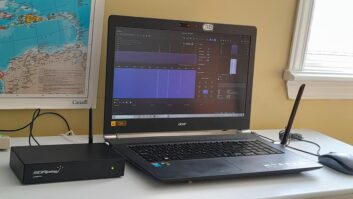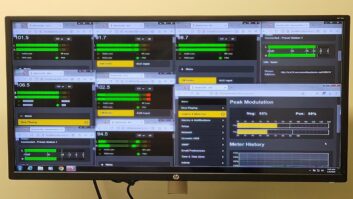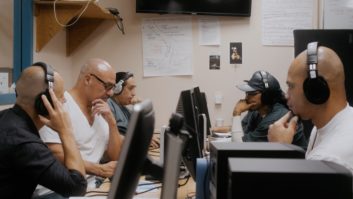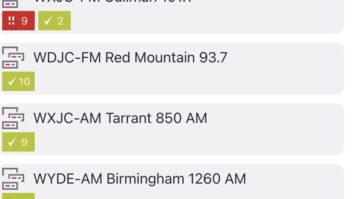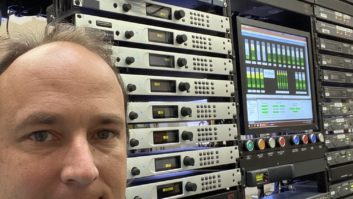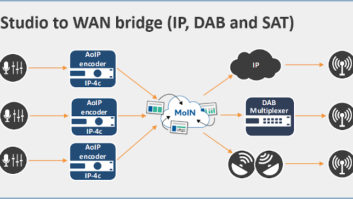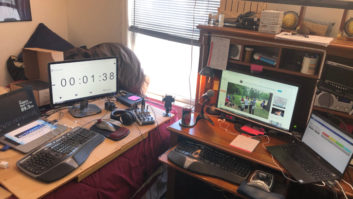Even with the loss of the Voice of America, the international shortwave radio bands are still alive with stations worth listening to. But what can you do if you don’t have a shortwave radio receiver, and/or live in an urban area where reception is difficult?
The answer is to use the internet to access remotely tunable shortwave radio receivers located around the globe. By going through these websites — which are free to use — you can get a taste of what’s on the air worldwide.
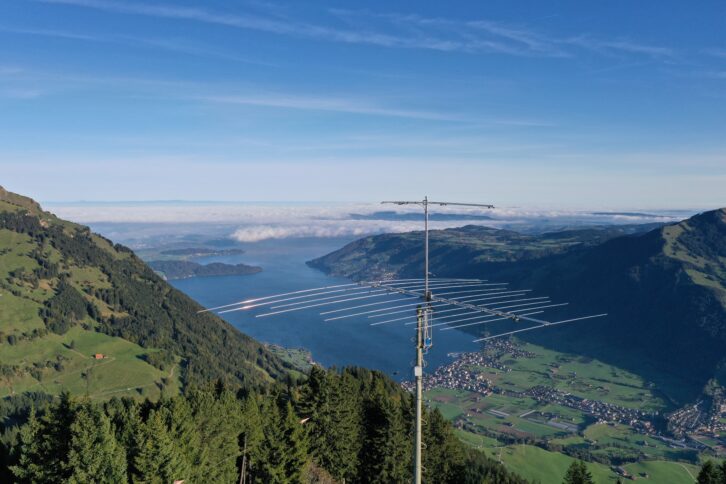
That’s not all: Shortwave radio receivers that are based far away from your location may allow you to hear international stations that you would never be able to receive at home. And if you do already have a shortwave radio, these web-based remotely tuned radios can help you confirm what you’re picking up at your own location.
How remote receivers work
Although the equipment used varies from site to site, the principle of remote radio tuning over the web is pretty constant.
The person who runs the website creates an interface — often styled to resemble an actual radio receiver — that the listener can interact with using the mouse. This form of control allows them to choose the frequency, control volume and often set various filters that improve the intelligibility of the signal being listened to.
So where do you find such radios? Well, you can always do a Google Search. However, it will save you time to surf to Globaltuners.com, SDRSpace.com or WebSDR.org. SDR stands for Software Defined Radio, a topic we have explored here in the past.
One truly cool site is the KiwiSDR map site. As the name suggests, this link takes you to a world map of clickable KiwiSDR remote receivers.
The KiwiSDR platform is unique in that it supports up to four independently-controlled connections — each user gets to control their own audio and waterfall channels.
While the KiwiSDR offers independent sessions, other remotely-accessible SDRs may not. For instance, some setups are designed for only one user at a time, or they force all users to share the same frequency. In these cases, proper etiquette is crucial; don’t just log on and start tuning around!
[Related: “The 79th WRTH Is the Bible for DX Listening”]
A case in point: I tuned in Radio Exterior de España (REE) transmitting from Noblejas, Spain on 17715 kHz. The signal was readable but distorted and weak. I then used the KiwiSDR Map to connect to a remote tuning site in the country southwest of me; they had a clearer, stronger signal.
I was also able to use this same rural site to pick out signals that were just peeking out of the background electrical noise in my suburban neighborhood. This noise-free rural site was able to receive them cleanly, allowing me to hear numerous stations from southeast Asia that were otherwise unreadable at my home location.
Next, I started moving around the North Atlantic, to see which remote tuning stations were getting the best REE signal. The best reception site was located in Newfoundland, followed by Iceland. What was really cool is that I could check out REE’s signal strength in real-time around the world!
For your first stab at using a remotely tuned radio, I would recommend trying the online receiver operated by Jeffrey W. Chilton (amateur radio callsign KM4QH) in Reston, Va. Its online interface is modeled directly on a classic Drake R8 radio receiver which you can operate using your mouse.
As for ideas where to tune to? The free website Short-wave.info can tell you which shortwave stations are on-air now, and help you identify any that you may come across.
Note: The times cited on this website use Universal Coordinated Time or UTC, which is the same as Greenwich Mean Time set in England. Just ask Google “what is the current time in UTC” to find out what it is right now (look for answers that use a 24-hour clock). This will help you figure out what stations to chase.
As I am writing, the time is 17:50 UTC. I use my mouse to type 15770 and then click on the orange button ‘F’ (for frequency) on the lower end side of the R8’s number pad. This takes me directly to WRMI (Florida) on 15770 kHz, which is coming in strong. (The audio level on this radio is very loud, so turn down your headset/speaker first.)
A little later, at 18:10 UTC, I use the R8 to tune to 13790 kHz. Based on the somewhat mangled French language broadcast I connect to and the reference listed in Short-wave.info, I seem to be hearing BBC World Service in French transmitting from Madagascar off the east coast of Africa.
Since I can also tune the online R8 using its up-down tuning keys (they move 5 kHz per click), or by spinning the tuning dial on the interface, I move around the shortwave bands looking for stations.
Unfortunately, the reception conditions are poor today, which happens due to the ever-changing nature of the ionosphere above that reflects shortwave radio signals around the globe. So I cheat a bit by turning on my own SDRplay nRSP-ST software-defined radio (detailed in a previous RW article) and attic-mounted MLA-30+ 100 kHz to 30 MHz loop antenna to see what’s out there first. (I am based in Ottawa, Canada.)
I discovered what appears to be Radio France International, in French, broadcasting a weak signal to me on 17850 kHz from Issoudin in central France. (I confirm this first by checking the frequency on Short-wave.info, and then comparing what I’m hearing with RFI’s live audio stream.)
Okay: Time to see how well the online R8 picks up RFI. I punch in 17850 kHz, and RFI comes in better there — stronger, but still a bit garbled — than it does on my own rig.
Supercharged
When it comes to remote shortwave listening — in this case, as a sidebar to a multiband amateur radio station — it is hard to beat the setup operated by Wolfgang Sidler (HB9RYZ) and Fredric Furrer (HB9CQK) on Mount Rigi in Switzerland.
Located at a height of 1,660 meters above sea level, the remote radio station uses a former Swiss Army radio mast to host a full range of amateur radio Yagi antennas on a rotable mount. The station also has a range of amateur radios that can be accessed online, as well as remote software defined multi-band radios.
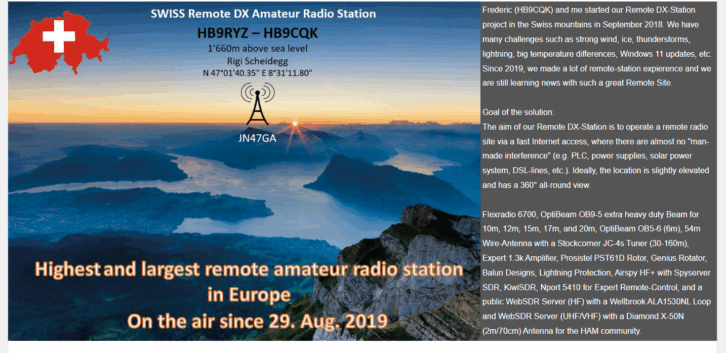
“The army was going to tear this mast down in 2018, until myself and Frederic heard about it,” said Sidler.
“We signed a rental contract with them, and now we have used this site for five years — the highest and most modern Flexradio 6700 remote amateur radio station in all of Europe — to let people free of charge worldwide listen to signals, and see how well their own amateur radio broadcasts are being received in Switzerland. Every amateur radio operator can experiment with sending their own signal and receiving from Europe.”
As the Swiss Remote DX amateur radio station website details, maintaining the tower during Switzerland’s harsh, cold and windy winters is not a job for the faint-hearted. But the results are well worth it.
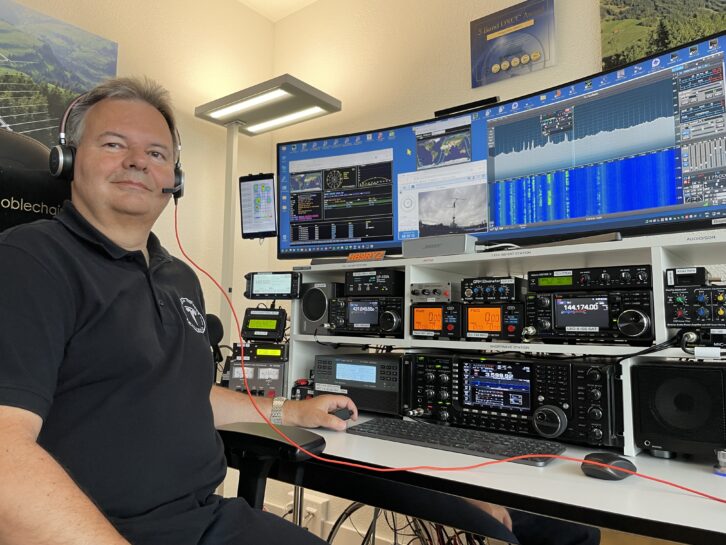
“You can reach and hear almost everything here in Switzerland,“ Furrer said. “If there is a very rare amateur radio station somewhere in the Pacific, we can always make contact. For example, Wolfgang and I managed to work in Guam on the magic 6m band, as well as one in Hawaii. That’s very, very rare in Switzerland, and it’s only because we have access to this amazing remote facility.”
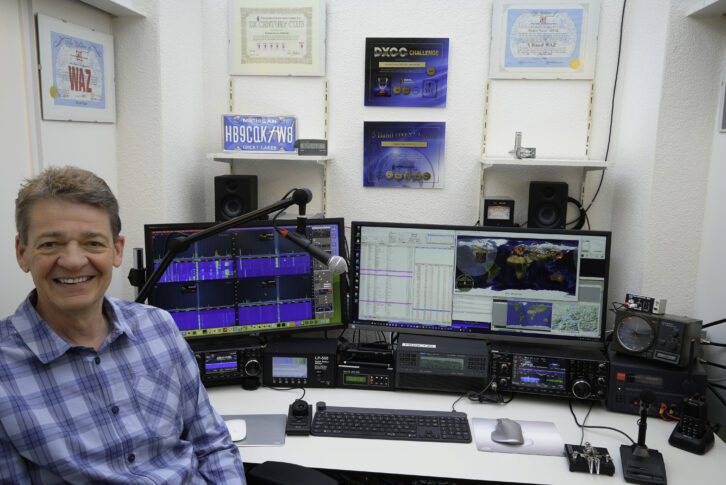
A word to the wise: The new PhantomSDR-Plus SDR shortwave receiver on this site may seem overwhelming to newbies, but the interface is intuitive. You can listen to the whole shortwave spectrum from 0 to 30 MHz including broadcast stations and amateur radio operators.
Worthwhile, and free
If you take anything away from this article, I hope it is the idea that trying shortwave radio listening using online remote radios is a worthwhile experience. Better yet, it is also free.
Back when I started listening, there were no such tools. I had to walk barefoot five miles through a blizzard to take coal to a steam-powered radio — okay, it wasn’t quite that primitive. Still, all I started out with was a 1960s-vintage Nordmende Caruso multiband radio/record player console, a 100-foot outdoor long wire antenna and a copy of the 1984 World Radio and Television Handbook.
Was it magical pulling in the faraway BBC World Service using analog tech? Yes! Still, I would have loved having access to the 21st century tools I have described. You can access them too, right after you’ve finished reading Radio World.
